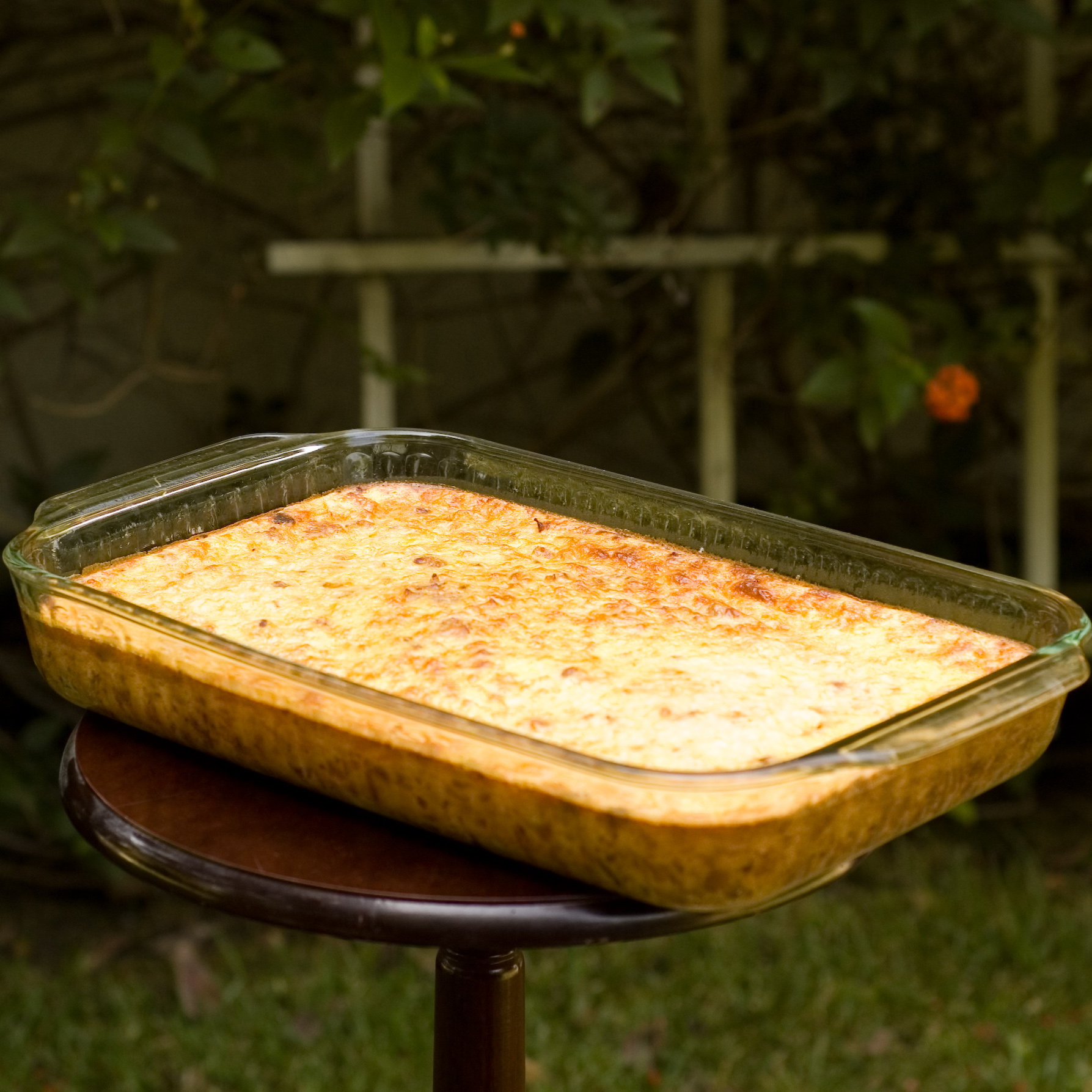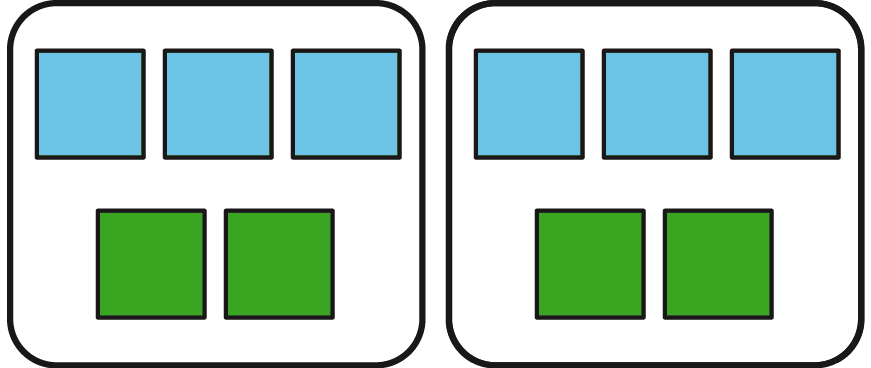Lesson 3
Defining Equivalent Ratios
Let’s investigate equivalent ratios some more.
3.1: Dots and Half Dots
Dot Pattern 1:

Dot Pattern 2:

3.2: Tuna Casserole
Here is a recipe for tuna casserole.
Ingredients
- 3 cups cooked elbow-shaped pasta
- 6 ounce can tuna, drained
- 10 ounce can cream of chicken soup
- 1 cup shredded cheddar cheese
- \(1 \frac12\) cups French fried onions

Instructions
Combine the pasta, tuna, soup, and half of the cheese. Transfer into a 9 inch by 18 inch baking dish. Put the remaining cheese on top. Bake 30 minutes at 350 degrees. During the last 5 minutes, add the French fried onions. Let sit for 10 minutes before serving.
- What is the ratio of the ounces of soup to the cups of shredded cheese to the cups of pasta in one batch of casserole?
- How much of each of these 3 ingredients would be needed to make:
- twice the amount of casserole?
- half the amount of casserole?
- five times the amount of casserole?
- one-fifth the amount of casserole?
- What is the ratio of cups of pasta to ounces of tuna in one batch of casserole?
-
How many batches of casserole would you make if you used the following amounts of ingredients?
- 9 cups of pasta and 18 ounces of tuna?
- 36 ounces of tuna and 18 cups of pasta?
- 1 cup of pasta and 2 ounces of tuna?
The recipe says to use a 9 inch by 18 inch baking dish. Determine the length and width of a baking dish with the same height that could hold:
- Twice the amount of casserole
- Half the amount of casserole
- Five times the amount of casserole
- One-fifth the amount of casserole
3.3: What Are Equivalent Ratios?
The ratios \(5:3\) and \(10:6\) are equivalent ratios.
- Is the ratio \(15:12\) equivalent to these? Explain your reasoning.
- Is the ratio \(30:18\) equivalent to these? Explain your reasoning.
- Give two more examples of ratios that are equivalent to \(5:3\).
- How do you know when ratios are equivalent and when they are not equivalent?
-
Write a definition of equivalent ratios.
Pause here so your teacher can review your work and assign you a ratio to use for your visual display.
-
Create a visual display that includes:
- the title “Equivalent Ratios”
- your best definition of equivalent ratios
- the ratio your teacher assigned to you
- at least two examples of ratios that are equivalent to your assigned ratio
- an explanation of how you know these examples are equivalent
- at least one example of a ratio that is not equivalent to your assigned ratio
- an explanation of how you know this example is not equivalent
Be prepared to share your display with the class.
Summary
All ratios that are equivalent to \(a:b\) can be made by multiplying both \(a\) and \(b\) by the same number.
For example, the ratio \(18:12\) is equivalent to \(9:6\) because both 9 and 6 are multiplied by the same number: 2.

\(3:2\) is also equivalent to \(9:6\), because both 9 and 6 are multiplied by the same number: \(\frac13\).

Is \(18:15\) equivalent to \(9:6\)?
No, because 18 is \(9 \boldcdot 2\), but 15 is not \(6 \boldcdot 2\).

Glossary Entries
- equivalent ratios
Two ratios are equivalent if you can multiply each of the numbers in the first ratio by the same factor to get the numbers in the second ratio. For example, \(8:6\) is equivalent to \(4:3\), because \(8\boldcdot\frac12 = 4\) and \(6\boldcdot\frac12 = 3\).
A recipe for lemonade says to use 8 cups of water and 6 lemons. If we use 4 cups of water and 3 lemons, it will make half as much lemonade. Both recipes taste the same, because \(8:6\) and \(4:3\) are equivalent ratios.
cups of water number of lemons 8 6 4 3 - ratio
A ratio is an association between two or more quantities.
For example, the ratio \(3:2\) could describe a recipe that uses 3 cups of flour for every 2 eggs, or a boat that moves 3 meters every 2 seconds. One way to represent the ratio \(3:2\) is with a diagram that has 3 blue squares for every 2 green squares.
